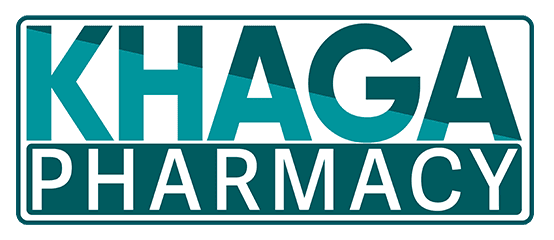Discover the facts about the FDA Ban Food Dyes, including why certain dyes are banned and others are regulated. Learn about the health risks linked to artificial food dyes, how the FDA ensures safety through rigorous testing, and comparisons with global regulations. Explore safer alternatives like natural food dyes and their benefits.
Introduction to FDA Ban Food Dyes:
The FDA has not completely banned food dyes, but it regulates them rigorously to ensure consumer safety. The agency monitors the use of artificial food dyes and bans those proven harmful, such as FD&C Red No. 2, while allowing others deemed safe within specified limits.
Food dyes, both natural and synthetic, are widely used to enhance the appearance of processed foods, beverages, and candies. However, concerns about their safety have sparked debates, with studies linking some dyes to allergic reactions, hyperactivity in children, and even potential carcinogenic risks. Over the years, the FDA has played a pivotal role in evaluating these risks and banning dyes that fail to meet safety standards.
Some studies suggest a link, particularly with red underline No. 5.
What is Food Dyes:
Food dyes are color additives used to enhance or restore the appearance of foods and beverages, making them more visually appealing. They are a common ingredient in processed foods, candies, beverages, and baked goods, often used to create vibrant and consistent colors that attract consumers. These dyes play a significant role in the food industry by improving the aesthetic appeal of products and sometimes indicating flavors.
Food dyes can be categorized into two main types: natural and synthetic. Natural food dyes are derived from sources like plants, minerals, or animals. For example, beetroot provides red coloring, turmeric offers yellow hues, and spirulina is used for blue shades. These dyes are often considered safer and more sustainable but may have limitations in vibrancy and stability.

The History of FDA’s Food Dye Regulations:
The regulation of food dyes dates back to the early 1900s when the Pure Food and Drug Act established the groundwork for food safety in the U.S. Initially, seven synthetic dyes were approved, but over time, studies exposed the risks of certain chemicals, leading to stricter regulations.
The FDA banned several dyes, including FD&C Red No. 2 (Amaranth) in 1976, after it was linked to cancer in animal studies. This ban marked a shift towards rigorous testing of food additives. Today, only a handful of synthetic dyes, such as Red No. 40 and Yellow No. 5, are approved under strict usage guidelines.
Current FDA-Approved Food Dyes and Their Safety:
The FDA currently allows the use of nine certified synthetic dyes, including Blue No. 1, Blue No. 2, Red No. 40, Yellow No. 5, and Yellow No. 6. These dyes undergo rigorous testing for toxicity, potential carcinogenicity, and allergenicity.
Despite their approval, controversies persist. For example, studies have linked Yellow No. 5 (Tartrazine) to hyperactivity in children, prompting mandatory labeling in the EU. In the U.S., the FDA continues to monitor such concerns, relying on updated research to guide its decisions.
Why Some Food Dyes Are Banned:
Food dyes are banned when scientific evidence demonstrates they pose significant health risks. For example.
- FD&C Red No. 2 was banned after studies linked it to cancer.
- Citrus Red No. 2, used on orange peels, is restricted due to toxicity concerns.
The banning process involves reviewing scientific studies, public consultations, and expert panel evaluations to ensure consumer safety.

Understanding FDA Regulations on Food Dyes:
The FDA rigorously evaluates the safety of food additives, including artificial dyes. Before a dye can be used in food products, manufacturers must submit data demonstrating its safety. The agency then reviews this data to determine whether the dye meets specific safety standards. If a dye is deemed safe, the FDA assigns it a specific color designation, such as Red No. 3 or Yellow No. 5. These designations help consumers identify the specific dyes used in a product.
How FDA Regulations Compare Globally:
The U.S. FDA’s approach to food dyes differs from other regions, such as the EU. While the FDA allows certain synthetic dyes with limits, the EU has stricter regulations, often requiring warning labels for dyes linked to hyperactivity. Some dyes banned in Europe, such as Red No. 40, remain approved in the U.S. These discrepancies highlight varying interpretations of scientific data and consumer safety priorities.
Are Natural Food Dyes a Safer Alternative:
Many consumers and food manufacturers are turning to natural dyes derived from sources like turmeric, beetroot, and spirulina. These dyes are generally perceived as safer but may have limitations in stability and vibrancy. The FDA also regulates natural dyes, requiring clear labeling to prevent misleading claims.
What Should Consumers Know About Food Dyes:
- Read Labels: Identify synthetic dyes in ingredient lists.
- Stay Informed: Monitor FDA updates on dye safety.
- Choose Wisely: Opt for natural or minimally processed products when possible.
FAQ
Most frequent questions and answers
The FDA allows artificial dyes deemed safe under rigorous testing. Bans occur only when dyes are proven harmful through scientific evidence.
Some studies suggest a link, particularly with red underline No. 5. However, the FDA states the evidence is inconclusive and continues to monitor the issue.
The FDA has banned dyes like FD&C Red No. 2 due to cancer risks and restricted others like Citrus Red No. 2 for toxicity concerns.
Conclusion:
The FDA Ban Food Dyes plays a critical role in ensuring food safety through stringent regulations on dyes. While some synthetic dyes remain approved, ongoing research and monitoring help identify and mitigate potential risks. As consumers, understanding labels and opting for natural alternatives can contribute to healthier choices.








